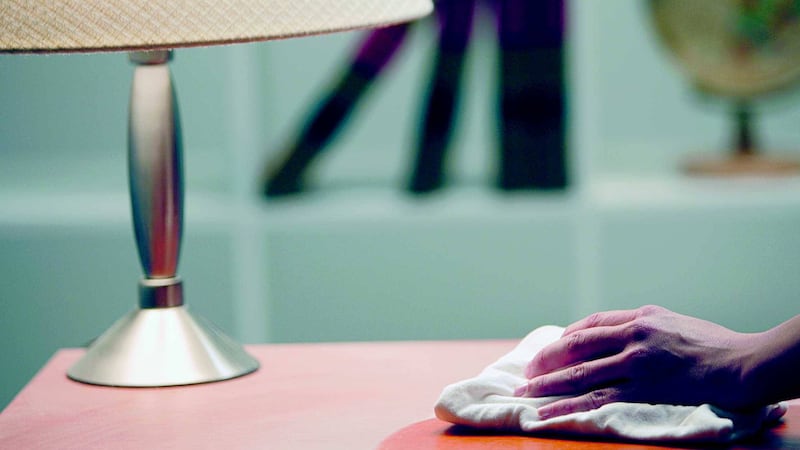CORNELIA Parker is a British artist whose reputation is founded on blowing up a garden shed, sticking the pieces together again in the shape of the explosion and having the result nominated for the 1997 Turner Prize. The Turner Prize is scheduled for Derry's City of Culture this October. Of the four artists nominated, one works in a deceptively naive and humorous way, one paints portraits of imaginary people, another adopts a unique and unpredictable approach to film-making and the fourth engineers live encounters between people. What will the native wits of my native city make of 'conceptual art'? Parker's latest project is 'dust-breeding'. This she accomplishes by placing objects in situ and allowing dust to settle upon them for a considerable period of time. Though not an artist myself, this is a technique I've practised many times in a domestic situation. However, Cornelia 'harvests' the dust, storing it in labelled jars for future use. She's currently collecting dust from St Paul's in London to make ear-plugs. That's the difference you see between the artist and the slattern. One breeds art, the other, bacteria though Tracey Emin's neglect of changing her bedlinen probably qualifies her as both. Cornelia Parker's pre-occupation with dust she would have us interpret as time passing, a token of mortality, a symbol of decay - the whole 'dust to dust, ashes to ashes' thing. There aren't many artistic concepts that absolve one of housework as well. I tip my hat to her in gratitude. You'd have been a long time waiting for enough dust to settle in our house to create an artwork. It was obsessively clean. Mother, armed only with a damp cloth and duster, waged daily war on dust. The duster-box was a motley collection of rags kept in a battered bentwood trug, known for some inexplicable reason as a 'tomato-handle'. We specialised in our family in made-up names for things, e.g. 'cameladdies' (tablemats) and 'flybee' (feather duster). The tomato-handle contained Brasso, Silvo, a crusted brown bottle of scratch-remover (shade, mahogany), round flat tins of Mansion polish and Johnson's Lavnender Wax that had to be opened with the twist of a coin inserted under the lip of the lid, a chamois leather, stiff as a board when dry, slimy as seaweed when wet. Elbow-grease was applied with felted wool, the remains of some unfortunate jumper shrunk in too-hot water or a holey old cotton vest. 'Bought' yellow dusters were a extravagance, kept pristine on top of the box for show. The duster-box resided in the glory-hole under the stairs, cheek-by-jowl with the Goblin cylindrical vacuum cleaner and the Ewbank carpet sweeper. "It beats as it sweeps as it cleans," claimed the ads.
And it did, quite efficiently, in a series of asthmatic-sounding swipes but shed human and animal hair fouled its internal organs and was hell to extricate. Talking of animal hair we had a cat. It was a little, grey, starving thing rescued from under a lorry. Daughter dear, at a precocious stage, blackmailed us into keeping it because she said "it was a perfect match for the carpet". Kitten Cloudy grew to handsome maturity with a fine coat that suggested Persian somewhere in her DNA. The cat and I aged and grew arthritic together. I forgot 'the more you have, the more you have to dust'. The house grew cluttered with impulse buys from dustcatcher shops full of wooden tulips, tinplate tealight holders and skelly-eyed porcelain angels. And then my eyes went funny. Everything acquired a misty aura. I thought I was developing cataracts, until I realised the wretched cat was moulting continuously all over the house on carpets, furniture and bedding - we even had furry vertical blinds. The loving spouse somewhat callously suggested we ought to vacuum the cat. Cornelia Parker would've known what to do with that hoover-bag harvest. I don't recall who said 'Memory is the dust events leave behind'. Now you must excuse me. I'm expecting visitors. I must lift the ornaments and blow under them.
